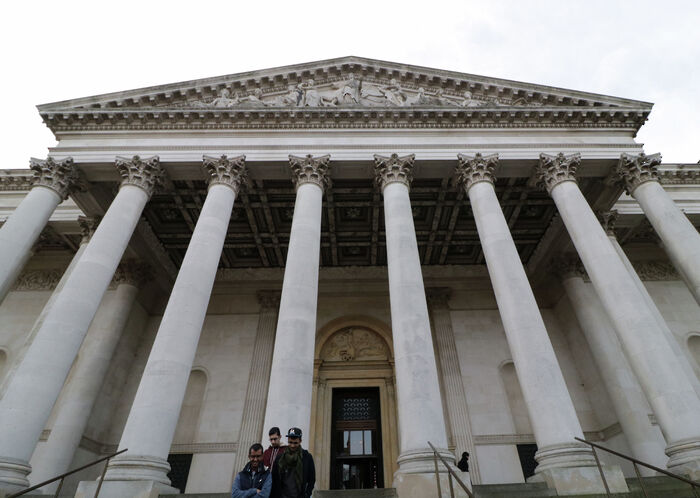Changes to Arts Council funding will give the marginalised a voice
The decision to cut funding to the ‘Big Four’ institutions, and give money to the regions and to marginalised groups should be celebrated, says Holly Firmin

Arts Council England recently announced that the ‘Big Four’ arts bodies face cuts to funding in order to better diversify arts provision in England. The move was pre-empted by warnings in 2014 from ex-chairman, Peter Bazalgette, for major arts institutions to diversify or face cuts. The Royal Opera House has claimed that it will face ‘undoubted challenges’ as a result of the cuts to funding, while the National Theatre admits it will ‘not be easy’ to deal with shortfall.
However, the decision to redistribute funding in order to promote diversification, while hurting the piggy banks of some of our most prominent cultural institutions, represents a vital symbolic shift. The decision cannot immediately tackle the systemic factors which generate an overwhelmingly white, middle-class portfolio of both artists and audiences, but nevertheless signals a powerful commitment to both diversification and decentralisation of the arts in this country.
“It is imperative not only to diversify the artists in receipt of funding from the council, but to decentralise funding.”
The announcement is, firstly, of great importance in diversifying the artists in receipt of funding. The Arts Council’s report on its 2018-22 portfolio focuses on attracting organisations that are BME, disability, female and LGBT led. Some of these new organisations funded by Arts Council England include ‘Ballet Black’, an international ballet company for dancers of black and Asian descent, and ‘Paraorchestra’, the world’s first professional ensemble for disabled musicians. Arts Council funding for these organisations validates the important work they have carried out in crafting their own spaces in an arts sector where such minorities are often woefully under-represented.
It is imperative not only to diversify the artists in receipt of funding from the council, but to decentralise funding. The decision to pour money into projects which foster arts outside of London helps to subvert the capital’s monopoly over the arts. Whilst London remains the biggest recipient of funding provided by the Arts Council, the North is now a closer second, as its funding in grants increased by 29.9 per cent, while that of London decreased by 3.8 per cent. Between 2018 and 2022, Arts Council England will spend an additional £170 million outside of London, with Manchester International Festival’s funding rising by a whopping 1,123 per cent to more than £9 million a year.
While the larger cultural institutions in London often serve swathes of tourists, it is important that the work of arts and cultural organisation is fostered within local communities. My local gallery, Focal Point in Southend-on-Sea, is in receipt of Arts Council Funding. While it is not one of the new organisations in the more diverse 2018-22 list, its work attests to the long-term importance of the local arts initiatives Arts Council England supports.
Focal Point recently commissioned Scottee, a local artist, to create a piece on Southend high street marking the 50th anniversary of the decriminalisation of homosexuality. Displayed proudly on the high street where I have myself experienced homophobic abuse, the commission serves as a powerful symbol of local solidarity for the LGBT+ community. Such projects diversify not only the artists in receipt of funding, but audiences, with working-class residents encouraged to consider the experiences of the local LGBT+ community as they go about their shopping in the high street. The 2018-22 funding portfolio represents a powerful commitment to the extension of such community-building work.
Unlike the work of organisations such as Focal Point, the museums of the University of Cambridge and the University of Oxford do not work to foster a sense of local identity or solidarity, but instead largely serve communities of students and tourists. Their work is still of great importance, but it reinforces the monopoly of a small, educated elite over the production and display of knowledge. These ancient institutions can therefore endure cuts between 10 per cent and 17 per cent to funding in order to serve the valuable goal of empowering a richer range of local initiatives.
Local arts and heritage has been under threat in recent years. Cuts to local government have undermined the democratisation of knowledge, with Northamptonshire Archives and Heritage Centre, for example, recently making the news for its decision to charge users to access local historical documents. Arts Council England’s 2018-22 portfolio therefore represents a timely and powerful commitment to the diversification and decentralisation of arts and heritage in England, a much needed reason for optimism in this important sector
 News / Uni to ‘review’ tripos rankings and weekend lectures in undergrad teaching overhaul10 April 2025
News / Uni to ‘review’ tripos rankings and weekend lectures in undergrad teaching overhaul10 April 2025 News / Rowing row continues as Oxford and Cambridge scrap women’s trial race9 April 2025
News / Rowing row continues as Oxford and Cambridge scrap women’s trial race9 April 2025 Comment / Death of the June Event?9 April 2025
Comment / Death of the June Event?9 April 2025 Features / Cambridge: where toxic productivity turns rest into a radical act8 April 2025
Features / Cambridge: where toxic productivity turns rest into a radical act8 April 2025 News / Under 3% of applicants for Cambridge academic jobs are successful7 April 2025
News / Under 3% of applicants for Cambridge academic jobs are successful7 April 2025






